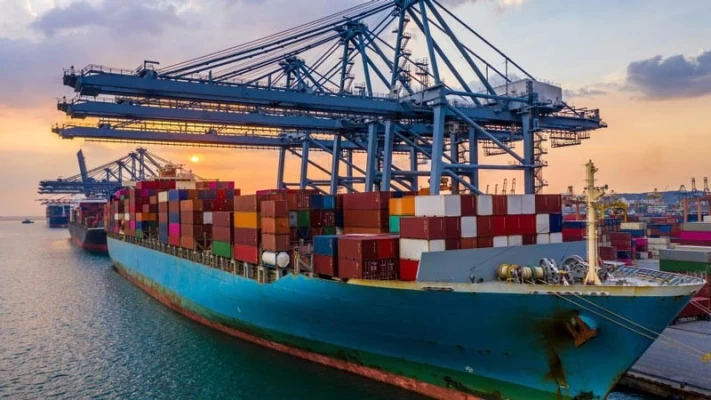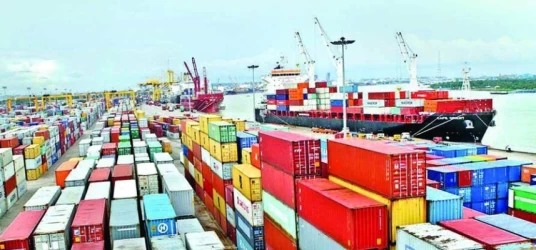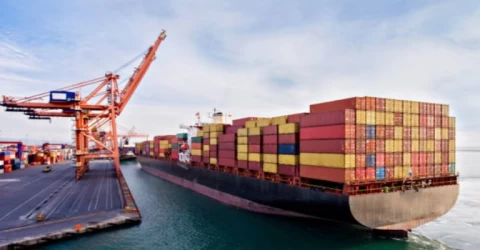Sea freight in Dublin port
The Port of Dublin is Ireland's largest and busiest seaport, serving as a critical gateway for international maritime transportation. Located on the eastern coast of Ireland, it connects the country to major markets in Europe and beyond. The port plays a vital role in Ireland’s economy, handling a significant portion of the country's imports and exports. With its modern infrastructure and strategic location, the Port of Dublin is an essential hub for global trade, providing a wide range of maritime services.
History of the Port of Dublin
The Port of Dublin has a rich history that dates back more than a thousand years. As a key center for trade and commerce in Ireland, the port has evolved from a small Viking trading post to one of Europe’s most important maritime hubs. Over the centuries, the port has adapted to the changing demands of global trade, modernizing its facilities to handle larger vessels and increased cargo volumes. Today, the port continues to grow, balancing its historical importance with cutting-edge technology and infrastructure.
Infrastructure and Facilities
The Port of Dublin is equipped with advanced infrastructure designed to handle a variety of cargo types. It has multiple specialized terminals that serve different sectors of maritime transportation:
- Container Terminals: The port has state-of-the-art container terminals, which are crucial for handling the growing volume of containerized trade. These terminals are equipped with modern cranes, automated systems, and large storage areas, ensuring the efficient movement of goods. Dublin’s container trade mainly involves consumer goods, industrial products, and foodstuffs.
- Bulk Cargo Terminals: The port also handles bulk cargo such as grain, coal, and petroleum products. These terminals are equipped with specialized facilities for the safe and efficient loading and unloading of bulk goods. The bulk cargo sector plays a key role in supporting Ireland’s industrial and agricultural sectors.
- Ro-Ro and Lo-Lo Terminals: The Port of Dublin has dedicated Roll-on/Roll-off (Ro-Ro) and Lift-on/Lift-off (Lo-Lo) terminals, which are essential for transporting vehicles, heavy machinery, and oversized cargo. These terminals make it easier for Irish industries to import and export goods with minimal handling and quick turnarounds.
- Warehousing and Logistics: In addition to its cargo terminals, the Port of Dublin offers extensive warehousing and logistics facilities. These services help streamline the supply chain by facilitating the storage, consolidation, and distribution of goods both within Ireland and internationally.
Maritime Container Transportation in Dublin
Container shipping is the backbone of the Port of Dublin’s operations. As the global demand for containerized trade has increased, Dublin has positioned itself as a major player in this sector. The port handles a large number of container ships that bring in essential imports such as electronics, machinery, and consumer products while also exporting key Irish products like pharmaceuticals, food, and beverages. Dublin’s container facilities are highly automated, reducing congestion and increasing the speed of processing cargo.
Dublin’s Role in International Trade
The Port of Dublin is Ireland’s primary connection to international markets, particularly the UK and Europe. It handles approximately two-thirds of Ireland's seaborne trade, making it an essential part of the country's economy. The port's proximity to key European trade hubs like Rotterdam, Antwerp, and Liverpool ensures that it plays a pivotal role in the movement of goods across the continent.
Additionally, the port serves as a key entry and exit point for goods moving between Ireland and the rest of the world. This includes trade with North America, Asia, and other global regions. Dublin’s efficient operations and modern facilities make it a highly competitive port in the European maritime sector.
Challenges and Opportunities
Despite its success, the Port of Dublin faces several challenges. One of the main issues is congestion due to the increasing volume of cargo traffic. As Ireland’s economy continues to grow, the port must expand its capacity to accommodate larger ships and greater trade volumes. Additionally, Brexit has created new challenges for the port, as trade with the UK now involves additional customs checks and regulatory changes. These factors have put pressure on Dublin to adapt and invest in new infrastructure.
However, the port also has many opportunities for growth. The global shift towards more sustainable shipping practices offers Dublin the chance to become a leader in green port initiatives. Investments in renewable energy sources, electrification of port operations, and efforts to reduce carbon emissions can help Dublin Port remain competitive while minimizing its environmental impact.
Sustainability and Environmental Initiatives
The Port of Dublin is committed to reducing its environmental footprint and improving sustainability. As part of its long-term strategy, the port has implemented several initiatives aimed at reducing emissions, improving waste management, and enhancing energy efficiency. This includes promoting the use of cleaner fuels for ships, optimizing port operations to reduce energy consumption, and supporting projects that promote biodiversity in the surrounding waters.
Furthermore, Dublin is participating in broader European Union programs that aim to create sustainable and efficient maritime transportation systems. By adopting green technologies and improving its environmental management practices, the Port of Dublin is ensuring that it remains a key player in international trade while contributing to global efforts to combat climate change.
Future Developments
Looking ahead, the Port of Dublin is planning several major development projects aimed at increasing its capacity and modernizing its facilities. These projects include the expansion of its container terminals, the deepening of the port to accommodate larger vessels, and improvements to its logistics infrastructure. Additionally, the port is investing in digitalization and automation technologies to streamline its operations and reduce delays.
These developments are essential for the port to maintain its position as a leading maritime hub in Europe. With global trade expected to continue growing, Dublin must ensure that it can meet the needs of both domestic and international markets while also addressing environmental concerns.
Conclusion
The Port of Dublin is not only Ireland’s largest and most important seaport but also a key player in the global maritime transportation network. Its modern infrastructure, strategic location, and commitment to sustainability make it a vital hub for international trade. While it faces challenges such as congestion and the impact of Brexit, the port's ongoing investments in capacity expansion and environmental initiatives position it well for the future. As global trade evolves, the Port of Dublin will continue to play a crucial role in connecting Ireland to the world.
If you have any specific questions or need further assistance, feel free to ask!











